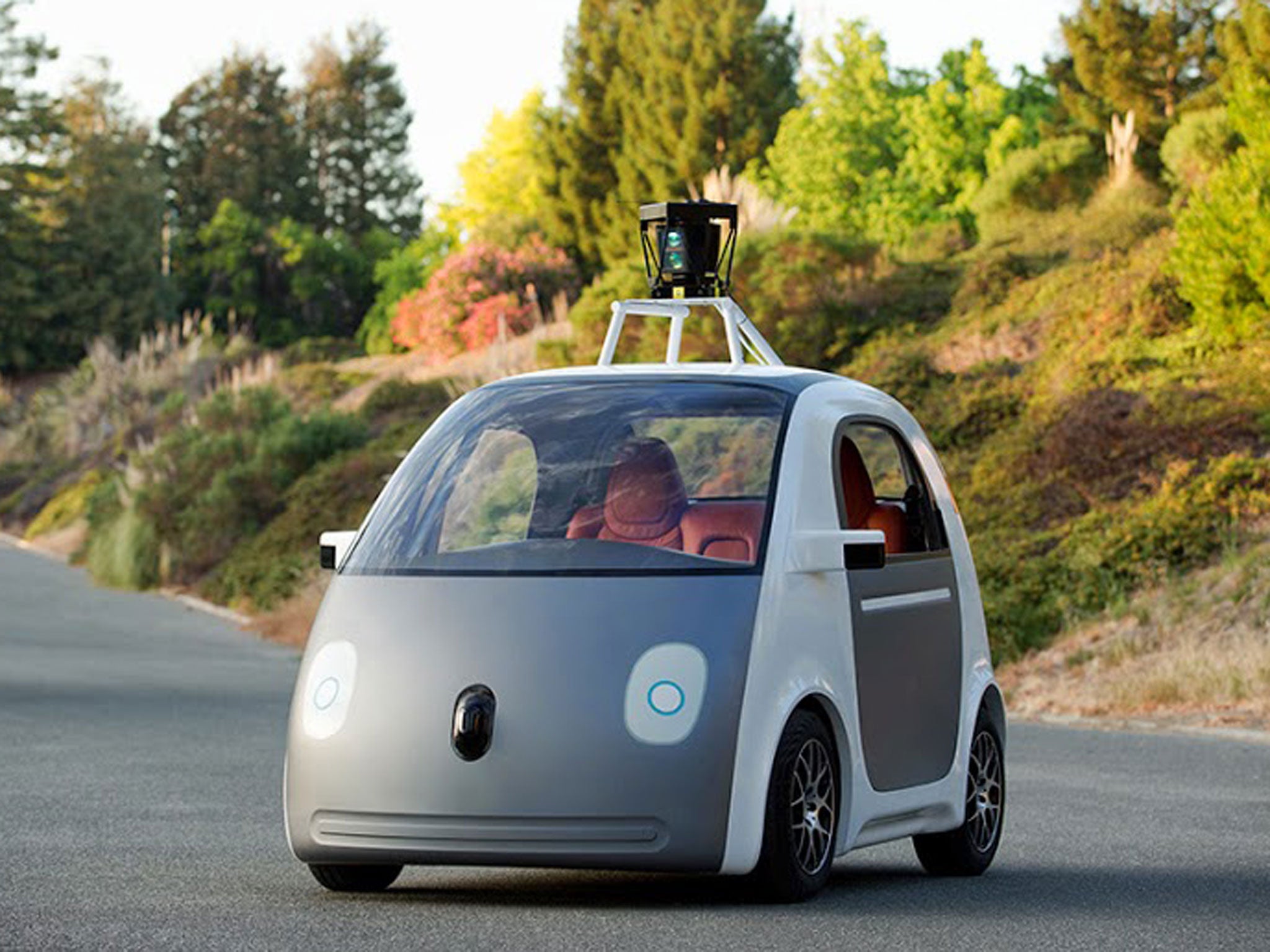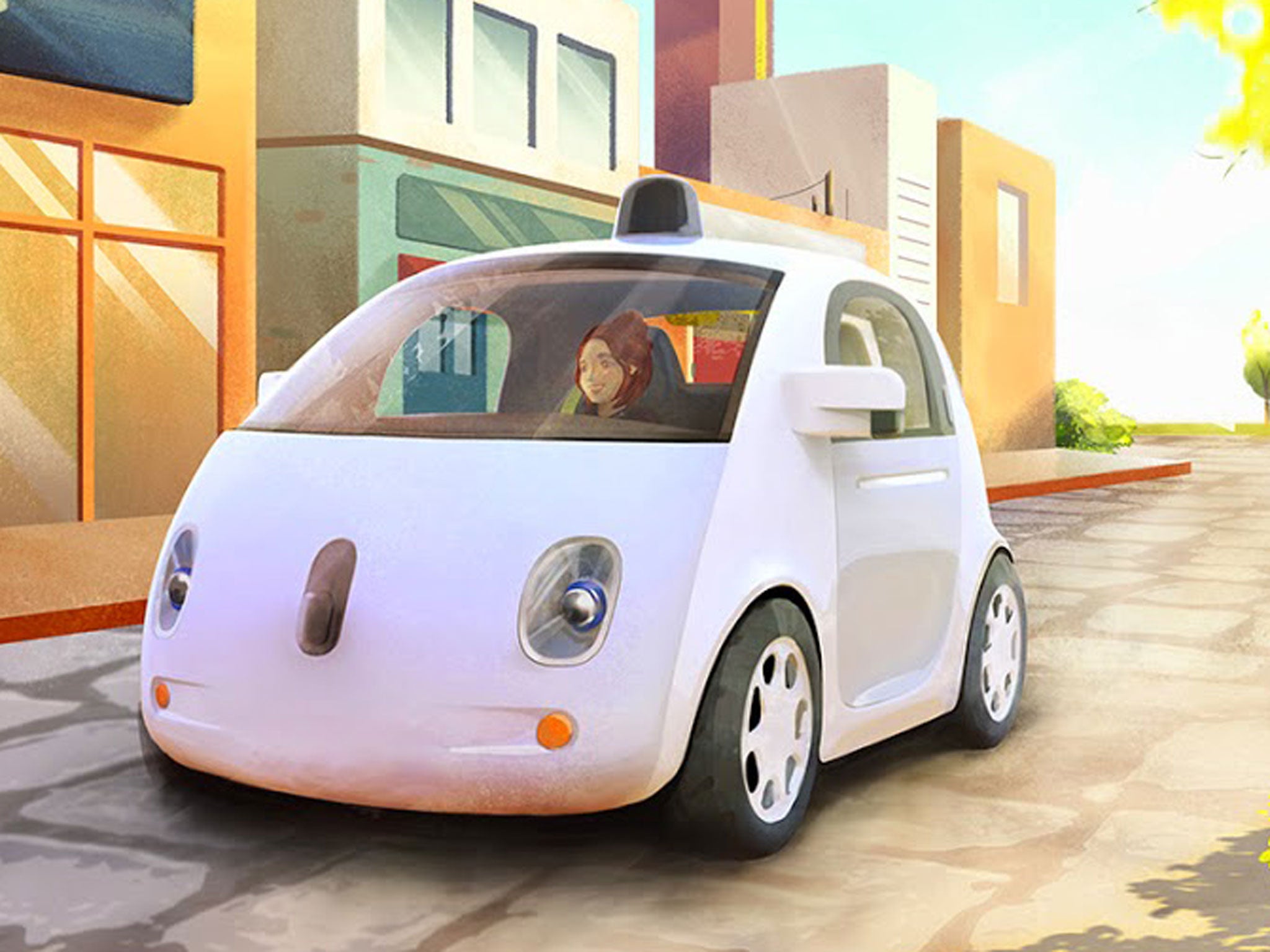Google unveils plans for first self-driving cars
The search giant has designed a prototype without a steering wheel or brake pedal

Your support helps us to tell the story
From reproductive rights to climate change to Big Tech, The Independent is on the ground when the story is developing. Whether it's investigating the financials of Elon Musk's pro-Trump PAC or producing our latest documentary, 'The A Word', which shines a light on the American women fighting for reproductive rights, we know how important it is to parse out the facts from the messaging.
At such a critical moment in US history, we need reporters on the ground. Your donation allows us to keep sending journalists to speak to both sides of the story.
The Independent is trusted by Americans across the entire political spectrum. And unlike many other quality news outlets, we choose not to lock Americans out of our reporting and analysis with paywalls. We believe quality journalism should be available to everyone, paid for by those who can afford it.
Your support makes all the difference.Google has unveiled plans to build a fleet of 100 self-driving cars that would automatically travel to a destination selected by a passenger using just a stop/start button and a smartphone app.
The company has been working on developing everyday cars fitted with sensors, computer and navigation equipment since 2010.
At the same time, it has also worked to develop a prototype from scratch that is completely self-driving, with the driver only being able to control a red 'e-stop' button to start the vehicle or to stop it in an emergency.
The cars will not have a steering wheel, accelerator pedal, or brake pedal, because according to Google, “they don’t need them”.
Instead, each vehicle will be fitted out with software and sensors that remove blind spots and detect objects out to a distance of more than two football fields from all directions.

A wheel, accelerator pedals and brakes will be replaced by stop and go buttons and a screen that displays the route.
Initially, the cars will retain manual controls for drivers in the case of emergency to ensure the vehicles comply with law in Nevada and Florida that only allows autonomous vehicles if a driver can take over.
The propulsion of the vehicles will be electric, and the speed has been capped at 25 mph as a safety precaution. The front of the car does not feature a bonnet, and will be built using a foam-like material to reduce its impact should it hit anything if the computer fails.
The car's designers say their early prototype has been created for “learning, not luxury” meaning it is light on “creature comforts” and will feature only two seats and a space for passenger belongings.
In a blog post, Chris Urmson, the project’s director explained: “The vehicles will be very basic—we want to learn from them and adapt them as quickly as possible—but they will take you where you want to go at the push of a button.
“We’re going to learn a lot from this experience, and if the technology develops as we hope, we’ll work with partners to bring this technology into the world safely.”
Mr Urmson said Google hopes to start testing prototype vehicles with manual controls by summer in California, where the company headquarters is based.
"We’re planning to build about a hundred prototype vehicles, and later this summer, our safety drivers will start testing early versions of these vehicles that have manual controls," Mr Urmson explained.
However, not everyone is enthralled by the concept of driverless cars. Chas Hallet, Autocar's brand editor, told The Independent: "Not sure that the Google car is going to appeal on looks or the huge hurdle that the company faces in getting customers to permanently give up driving themselves. Yes, there's a market for a self-drive mode - like cruise control today - but this solution is a tough ask"
To date, Google has driven hundreds of thousands of miles on public roads with Lexus SUVs and Toyota Priuses outfitted with the special equipment but this prototype is the first Google will have built for itself.
Join our commenting forum
Join thought-provoking conversations, follow other Independent readers and see their replies
Comments